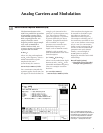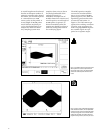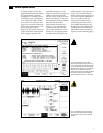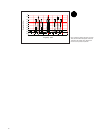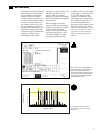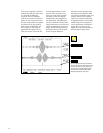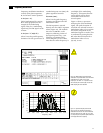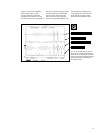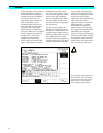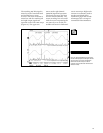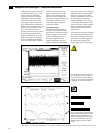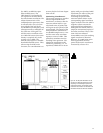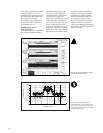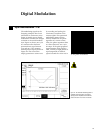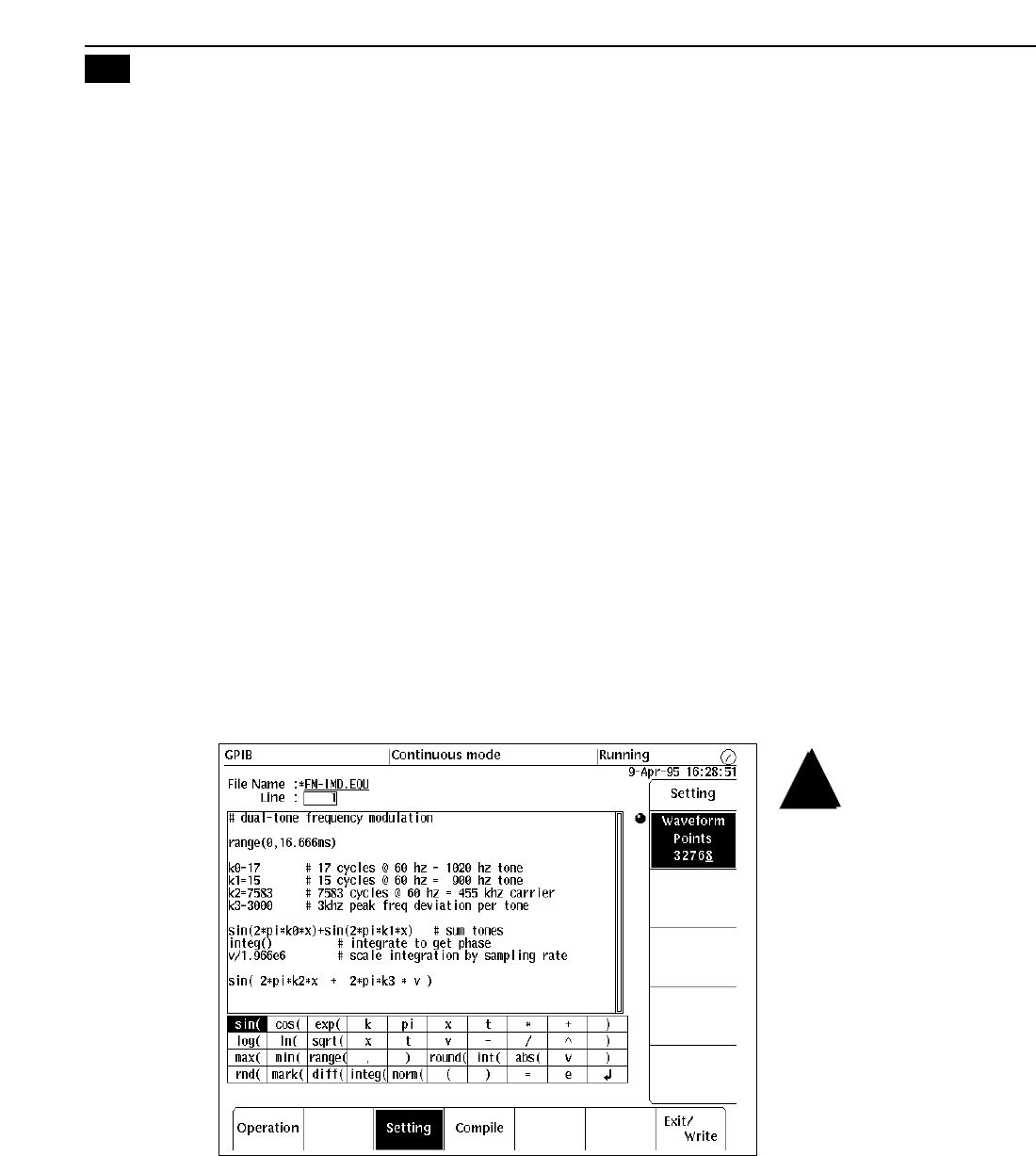
12
While basic single-tone FM is a
built-in function of virtually all
conventional signal generators,
dual-tone FM modulation clearly
contrasts the flexibility of the
AWG approach. Dual-tone
modulation tests can be used to
measure intermodulation prod-
ucts in a noise reduction
compandor (compressor-
expander) in FM receivers such
as cordless phones. Standard
dual-tone compandor test
frequencies are 900 Hz and
1020 Hz and a typical minimum
requirement is that intermodula-
tion products should be 26 dB
below the per tone levels. This
test used to be performed at
audio frequencies since compan-
dors work in the audio band. But
highly integrated receivers may
not offer direct access to the
compandor circuit, so the dual-
tone signal must be injected as a
modulated IF signal.
The apparently odd combination
of tone frequencies means that
the AWG waveform parameters
must be carefully selected. The
first step is to recognize that
900 Hz and 1020 Hz are both
integer multiples of 60 Hz. Thus
a waveform period of 16.666 ms
will exactly fit an integer
number of cycles for each tone
(15 and 17 respectively). The
next step is to ensure that the
carrier frequency itself is phase
continuous in a 16.666 ms
record. If one wants to inject at
an IF frequency of 455 kHz, one
must consider that 455 kHz is
not an integer multiple of 60 Hz.
However, with a carrier of
454.98 kHz, exactly 7583 cycles
of the carrier frequency fit in the
16.666 ms period. The 20 Hz
error, less than 50 ppm, is irrele-
vant for all practical purposes.
Figure 12 shows the waveform
definition in the AWG’s equation
editor. We take advantage of an
equation compiler function
which allows the parameter “x”
to represent a dummy variable
that takes on values between 0
and 1 in direct proportion to the
location within the 16.666 ms
record. For example, the 17
cycles of the 1020 Hz tone can be
expressed as sin(2π 17 x). This
takes the time variable “t” out of
the equation and is particularly
useful for fitting exact numbers
of cycles within an AWG record.
First, the two tones are added to
make the modulating signal.
Next the modulating signal is
integrated using the AWG’s inte-
gration function. The integrated
signal must be scaled by the time
between each point since the
integrator integrates point-to-
point without regard to sample
rate (which can be changed).
With a record length of 32768
points, the 16.666 ms period
leads to a sample rate of
1.966 MHz. Finally, the integrated
modulating signal is inserted
into the phase argument of the
basic carrier equation with a
peak deviation of 3 kHz per tone.
FM with Dual-Tone Modulation
5
Figure 12. Description of a dual-tone FM signal.
The modulating tones are 900 Hz and 1020 Hz
on a 455 kHz carrier. The record length is
32,768 points, the waveform period is 16.666 ms,
and the sample rate is 1.966 MHz. This FM signal
is used to test the intermodulation distortion
performance of a syllabic expander in an FM
receiver.




